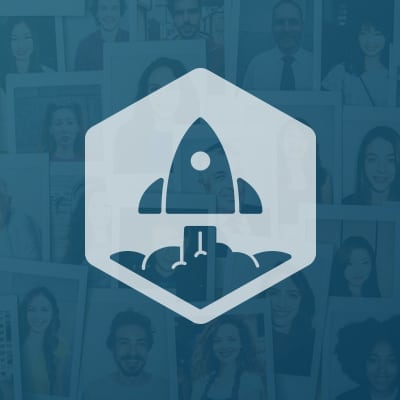Post written by guest blogger Meena Sandhu.
Why are you at SaaStr? Why am I at SaaStr? Why does this community congregate and grow year over year? Is it the content? The networking?
The answer seems simple: we’re all here because there’s nowhere else that we can have access to all these SaaS success stories, the rising stars, and SaaS unicorns under one roof.
But there’s something more, we keep coming back because of the incredible value of connecting with like-minded people. At SaaStr Annual, the community feels more approachable and more accessible. This like-minded tribe of 10,000 plus attendees lets it’s guard down and evokes open conversation and knowledge sharing. Jason Lemkin has built THE gathering for his SaaS tribe.
It’s busier than ever, more international than ever, and faster paced than ever. Those that are attending for the first time are pleasantly surprised at how easy it is to start a conversation and the willingness to exchange ideas. It’s not just the quality and quantity of people that bring us together year over year, it’s the culture of connecting and sharing that embodies the event.
Day 1 is often filled with energy, excitement and anticipation. By day 2, we’ve all settled in and found our groove, our SaaS tribe is operating at optimal efficiency. Here are some of my highlights from Day 2 at SaaStr Annual 2018.
Outbound teams – building them right!
In SaaS, there’s often a lot of focus on inbound marketing and sales. Outbound is the less understood, sometimes feared, sometimes avoided path to revenue. Companies have been known to wait until their inbound leads have dried up to start implementing an outbound strategy. Aaron Ross, a SaaStr veteran, co-founder of Predictable Revenue, and co-author of From Impossible to Inevitable shared in his session the importance of building the right outbound team to experience outbound success. So many of the failures in outbound can be traced back to not building the right team.
There’s four different starting models, what is yours?
- The Internal Team
- The External Team
- The Parallel (internal + external)
- Scrappy (not recommended)
Aaron talked about the need to nail your niche before you begin outbound. Is it a challenging niche? Do your prospects need to be experts in the industry? Your product must be proven with active customers, testimonials, and case studies.
When you’re ready to build your team, you have to focus on the right goals. Vanilla forums Melanie Attia and Mindfire’s Inc’s Mackenzie Farsheed both echo that a common mistake is focusing on leads in outbound, when the real focus should be quality hand-offs.
Additionally, when the goals are misaligned, you either set up your team for failure or you build the wrong team with the wrong skill set. Aaron says Internal teams should be looking at a goal of 5-15 SQLS per SDR per month and external teams should be aiming for 10+ quality handoffs.
Added Features, Added Benefits
At any event, if you want to find the most engaged attendees, look to the app, look to social media. That’s where you find your most active participants. A notable feature in the app this year is “Braindate”. What is a braindate? It’s offering expertise, it’s asking questions, it’s igniting conversation, and once again, it’s connecting like-minded people. These are short 30 minute meeting slots. You have the opportunity to ask questions of an expert in your field, you can give back and share advice, you can tackle industry struggles, you can form partnerships, you can cut to the chase and get down to business.
If you’re not braindating, you really should. Mark it down as a must for 2019. You have 3 days with access to the greatest minds in the business, reach out and connect with people. If you’re a proven leader, here’s your chance to give back to the SaaS community and help others find their path to success.
48 hours at SaaStr and 10 braindates later, I walked away with new content partners, I helped peers find solutions, and I connected with companies and people i otherwise would not have come across.
Partnership Path to Revenue
Visit the Slack or Stripe websites to see that they each have a dedicated partner program page. Strategic partnerships, especially in the B2B SaaS space, have become a popular strategy for revenue growth. Whether it’s collaborating partners, supporting partners, or channel distribution partners; partnership strategy has become a popular play.
That being said, it’s important for an organization to understand if they need a partnership strategy because not every business does and then to define which types of partnerships make the most sense for your business.
Slack’s Head of Partnerships, Jassim Latif talks about how they use outside developers to build bots. Slack’s vision of the future is a space where the bots and applications that are built on top of Slack drive far more value than the platform on its own.
Stripe’s Cristina Cordova talks about the three categories of partnerships. At Stripe they look at:
- Product & Financial Partners
- Distribution Partners
- Ecosystem Partners
There’s a unique strategy for each category and each of these three categories contributes in a different way to driving revenue.
Soooo much more……..
A single blog post cannot do justice to the immense learnings and experiences that one day at SaaStr brings. I look forward to one more day of exploring the content and speakers.
And last but not least, “The English Beat” were top notch, a great throwback for me, and something new for some of my younger peers. 😉
Meena Sandhu, VP of Marketing and Growth at Predictable Revenue, the Outbound Success Company. Connect with me on Linkedin or follow me on Twitter @meenasandhu

